Some people love it, some people hate it. Buying canned or packaged tuna has been around for a long time, making dishes from tuna salad to tuna pasta to tuna patties. As a versatile protein source, tuna can be a healthy addition to a diet with moderation.
The taste of tuna is very unique. Even though tuna is fish, this meat doesn’t have a strong fishy taste or smell. Instead, tuna has a more salty, meaty, and possibly creamy taste.
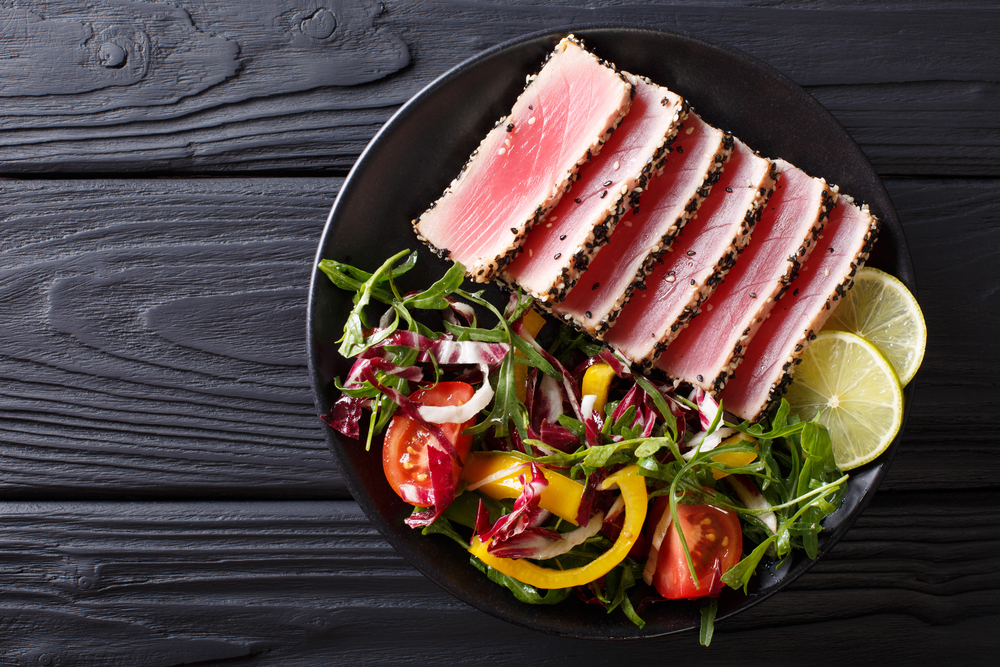
The Ocean Taste of Tuna
With tuna being able to be eaten in a variety of ways, there are a number of tastes that tuna can have. This fish can easily take on the flavors that are added to it, such as mustard or a collection of spices.
At its core, tuna has a buttery and creamy taste combined with a salty and umami flavor. Its taste isn’t super strong, allowing many flavors to be added.
Canned tuna has a more oily taste to it from how it is packaged. Usually, when tuna is canned, salt and oil-brine are added for preservation. Packaged tuna is saltier but has a less oily taste.
Fresh tuna has a bright and fresh taste without much salt (other than the tuna’s traditional salt) and without an added oil-brine. The flavor is more mild making it the perfect base to add all your favorite spices and seasonings. Albacore tuna has the freshest taste.
The Texture of Tuna
The texture of tuna is unlike the texture of many other fish. With canned tuna, it has a similar texture to canned or shredded chicken. The texture is softer with a more melt-in-the-mouth quality.
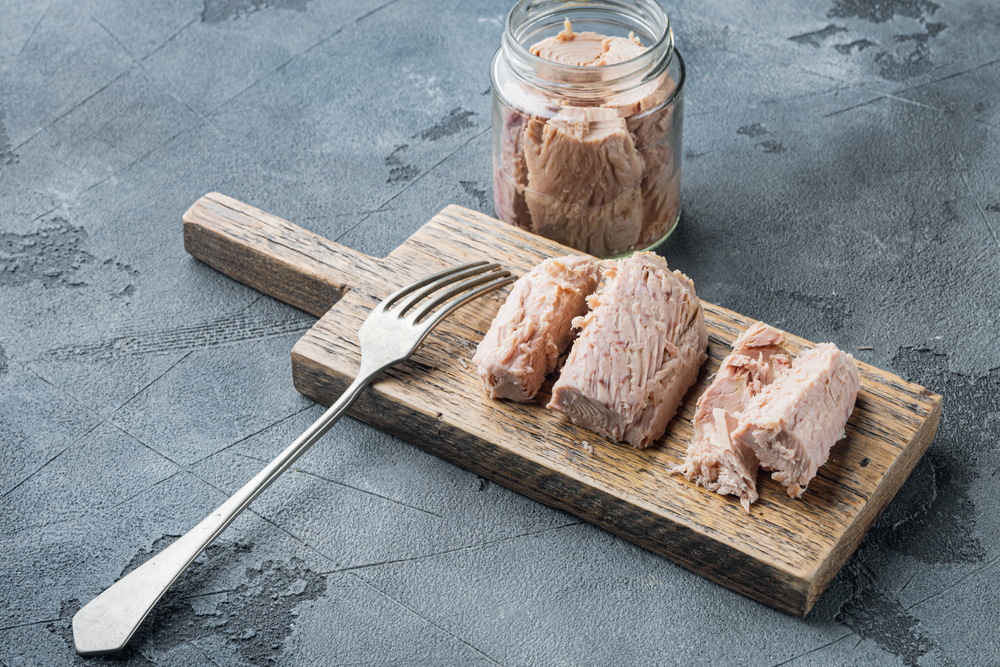
With its texture, tuna can easily be made into a salad, a filling for a sandwich, or added to pasta. If you need something with a softer texture, then tuna is the way to go.
Preparing Tuna
Unless you’re someone who loves to eat plain tuna right out of the can, there is some preparation that you’ll want to do. We’ll go over the process from storing tuna all the way to adding your favorite flavors.
Storing Tuna
Whether you are buying fresh or have some leftovers, it is important to know how to properly store your tuna. Canned tuna is simple where you can just leave it in the cupboard, but fresh is more complicated.
Tuna must be stored in the fridge. The safest temperatures for tuna are -2 – 0℃.
When putting tuna in the fridge, it must be wrapped in foil or plastic wrap and placed into an air-tight container of some sort. You should also wipe down the tuna with a paper towel to remove excess moisture.
Fresh and raw tuna will go bad in the fridge after 2 days. It’s best to use this fish right away so you aren’t left with a bad tuna making the whole fridge smell bad.
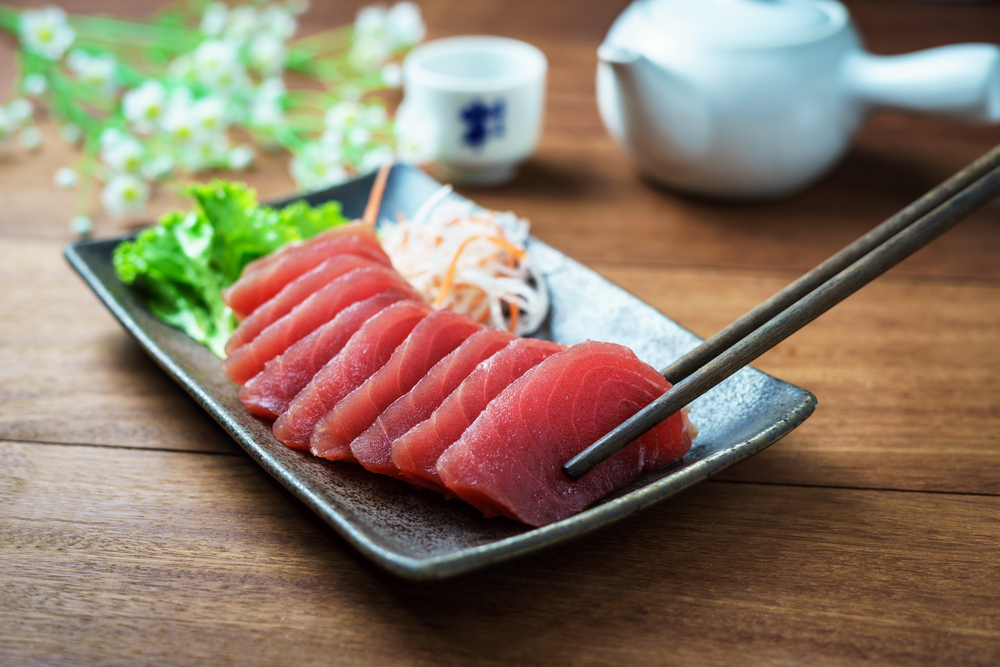
Leftover tuna should be put into an air-tight container in the fridge. If the tuna has a tight cover, it can be stored in the coldest part of your fridge for 2-3 days.
How to Know if Tuna Has Gone Bad
It’s hard to not be able to tell when tuna has gone bad. Good tuna doesn’t have a strong smell or taste (without having other products added to it.) Tuna doesn’t normally have a strong fishy smell, so if you find that your tuna smells sour or super fishy, it’s time to throw it out.
The color of the tuna will also change. When tuna goes bad, the meat will begin to look lifeless with grey or cool undertones. Only eat tuna that has red undertones.
These signs also apply to canned tuna. However, canned tuna can have a strong metallic smell when bad and it might leak gross-looking liquids. With canned tuna, always check the expiration date.
Can You Freeze Tuna?
Fresh tuna can be frozen to be kept good for longer. Before you do, make sure to rinse the tuna under cool water and dry it with a paper towel. Let it get to fridge temperature before freezing.

When freezing either put the tuna into an air-tight freezer bag or an air-tight container. Plastic works best with the freezer since glass can react to temperature changes and metal will impact the taste and freshness of the tuna.
If you bought a whole fresh tuna, remove the guts before freezing. The guts will go bad faster than the meat and can make everything go bad faster.
Tuna can be frozen for up to 6 months, much longer than the initial 2 days. However, the best quality of tuna lasts up to 3 months, from 3 to 6 months the tuna will lose some flavor and nutrition.
Defrosting Tuna
To defrost tuna, place the container that it froze in into the fridge overnight. Allow it to slowly defrost to prevent bacteria from forming. Don’t try to defrost tuna in water or on the counter, that will make it go bad or make the properties of the tuna become unpleasant.
Also, do not refreeze tuna. Once it’s defrosted, use it right away.
Making it Taste Good
If you don’t like tuna, there’s a chance that you aren’t preparing it in a way that you like. Tuna has the ability to have many tastes that can be suitable to many sets of tastebuds.
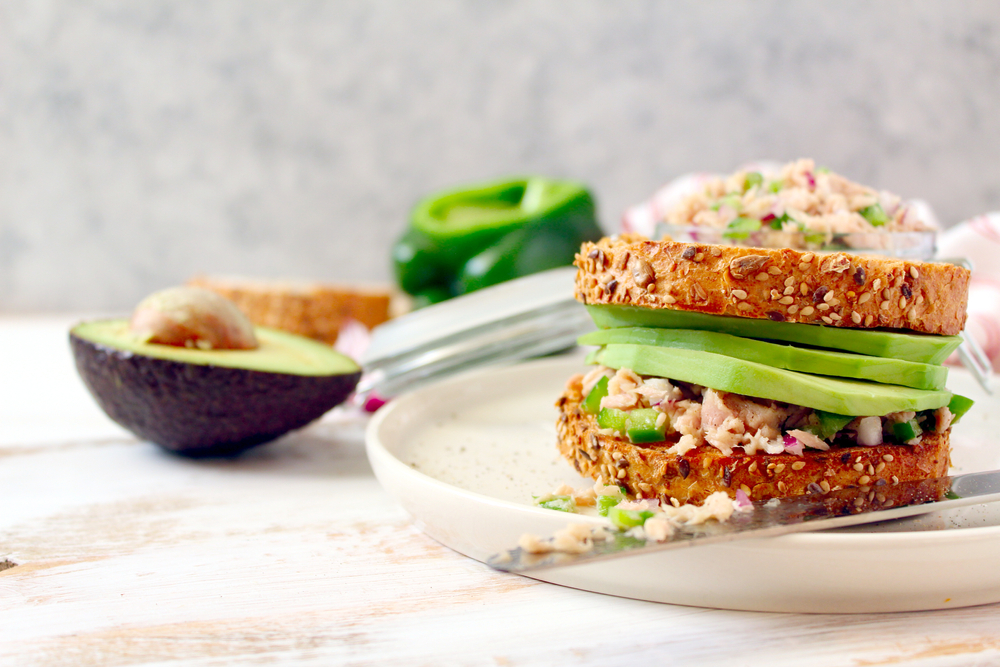
A simple way to prepare canned or packaged tuna is to add mayonnaise, mustard, and your favorite spices. All different kinds of peppers, lemon, garlic, rosemary, and more can be added to your tuna to make it taste better.
If you don’t want to eat plain tuna, you can add it to other dishes. You can put your mixture into a sandwich with toasted bread to add a variety of textures. Tuna can also be made into a casserole to make it warm and creamy, bake with teriyaki, added to different kinds of pasta like mac and cheese where the cheese will combine nicely with the tuna texture, and more.
A list of tuna-related recipes:
- Tuna salad
- Tuna pasta (added to mac and cheese, spaghetti, or any other pasta)
- Tuna casserole
- Baked with teriyaki
- Soups and stews
- Egg salad with tuna
- Fish cakes
- And many more
Make your tuna taste better by adding spices, sauces, relish, other vegetables or tomatoes, or combining with other kinds of meat. There’s a recipe for everyone.
Is Tuna Good For You?
Tuna is best eaten in moderation due to its mercury content. When eaten in moderation, however, tuna can be very good for you.

There are many benefits that tuna has from vitamins to hair growth to skincare. Here are just some of the nutritional benefits that eating tuna has.
- Very high in Vitamin D
- Very high in Vitamin B12, something that everyone needs more of
- High in zinc
- High in magnesium
- High iron
- High in phosphorus
- Good for heart health
- Very high in protein
- Lowers cholesterol
- Regulates metabolism
- High in Omega-3 fatty acids
With the combination of all these fatty acids, vitamins, and minerals, tuna provides a great nutritional blueprint for hair growth. Eating other kinds of fish can help with promoting hair growth, but tuna has the most hair nutrition in the smallest amount. It is also one of the cheaper foods for hair growth.
Tuna also has a high amount of selenium, which is a great mineral for healthy skin. This mineral helps support skin elastin, which protects your skin from outside sources.
The antioxidants and fatty acids help control oil production, promote skin regeneration, and helps give the skin all the nutrients it needs to be healthy. The fatty acids really help with reducing inflammation, which is very helpful if you suffer from a lot of skin irritation or acne.
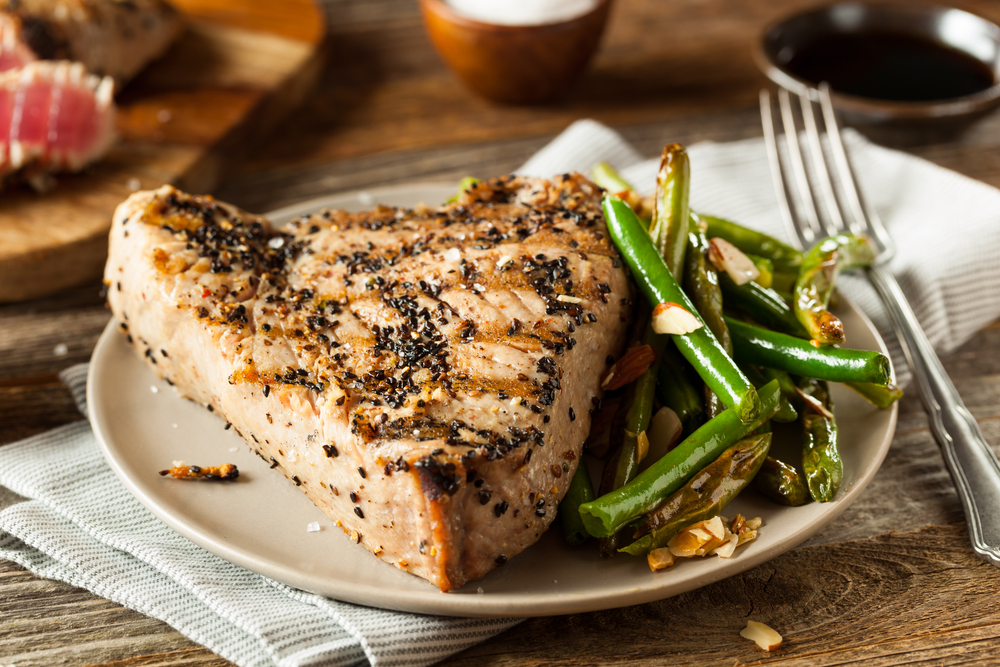
It is important to eat tuna in moderation for these benefits, especially if you are getting these nutrients from canned tuna. The salt content in canned and packaged tuna can actually hurt the skin and your overall health if too much is consumed.
The Prices of Tuna
The great thing about tuna is that it can fit in all sorts of different budgets. You can buy cheaper tuna in prepackaged form for anywhere from $1-$4. While the quality of prepacked tuna is nowhere near as great as getting tuna fresh, you can still get many of the same nutrients.
The most expensive kind of tuna, and therefore the most sought after, is Bluefin tuna. The highest quality of Bluefin tuna, which comes from Japan, is priced at $200 per pound. Now that’s an expensive tuna salad. The average quality of Bluefin tuna is $20-$40 per pound. That is still an expensive tuna.
Bluefin is very large and is only caught in the seas around Japan. The combination of those factors is a large contributor to why this kind of tuna is so expensive. There’s not as much supply as there is demand, and with the high quality of fish that it is, Bluefin has grown quite the reputation.
Albacore tuna is the more affordable fresh tuna, priced at around $3-$4 per pound. This kind of tuna is more widely available and isn’t caught in only one part of the world.
As said before, with the wide range of kinds of tuna and their quality, there is a tuna at any price. You can buy tuna anywhere from $1 to over $200 per container/pound. The quality varies as widely as the prices, so choose the kind that is best for your budget and your dish.
Learn more on What’s Otoros Price Per Pound
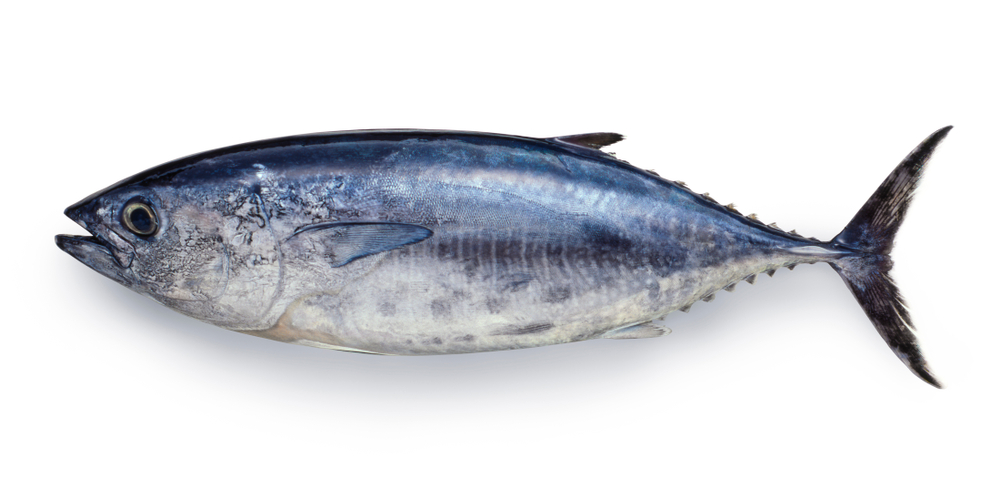
Final Thoughts
Each kind of tuna has its own taste. At the core of tuna, the taste is fresh, slightly salty, sweet, and a bit creamy. There is a semi-strong umami taste that is unlike many other kinds of fish. The flavor of tuna can easily be changed by adding spices, sauces, and many other kinds of ingredients.
Tuna can be made into many different recipes like tuna salad or fish cakes. There is a way to make tuna for nearly everyone to enjoy.
Tuna, in moderation, is very good for you. Not only do the vitamins, minerals, and fatty acids help with keeping your heart strong and healthy, but they also help the hair and skin. Tuna can promote hair growth and make your hair stronger while also keeping your skin protected and youthful.
The high amount of protein and the affordable prices of tuna can make it a great addition to many people’s diets.







